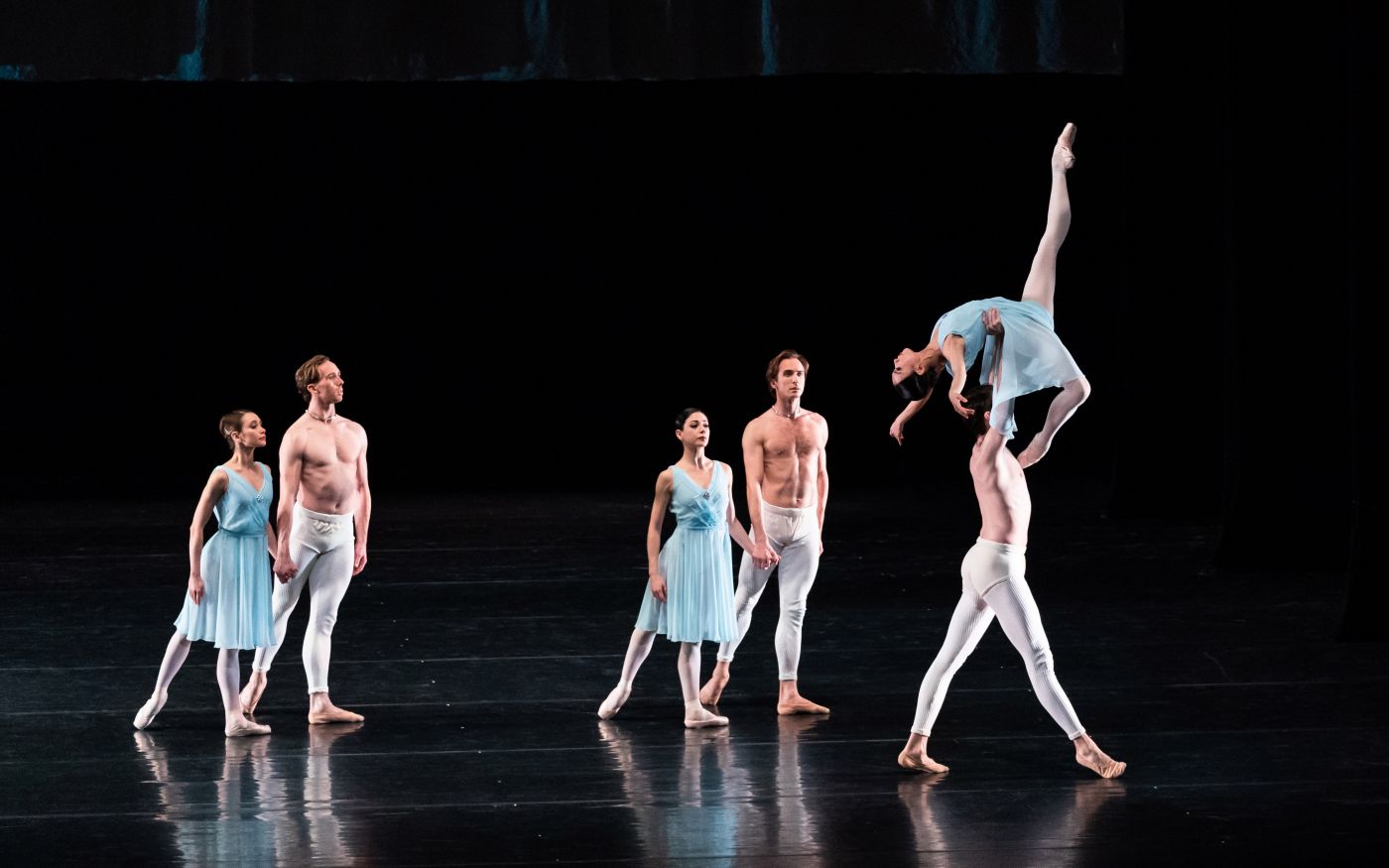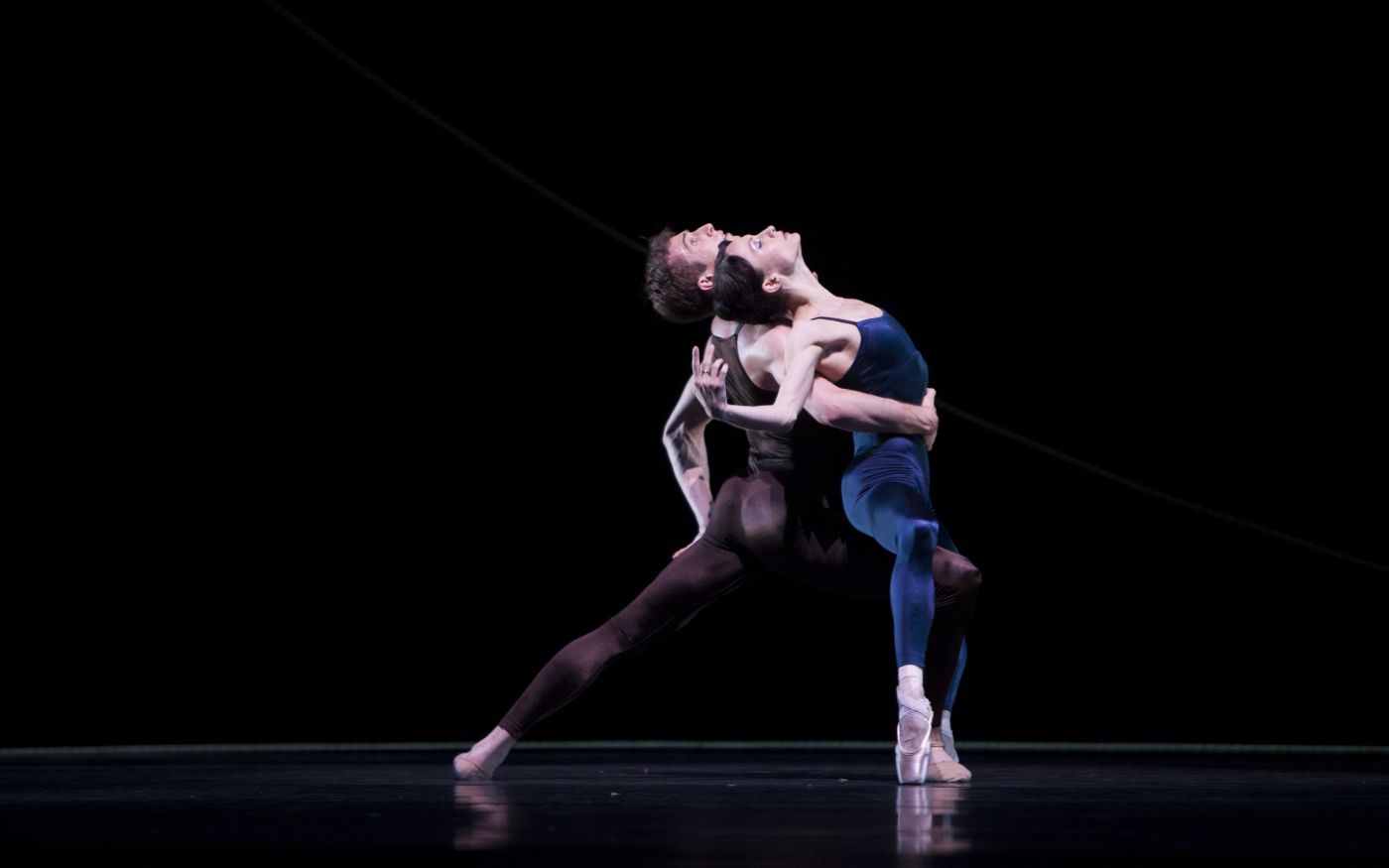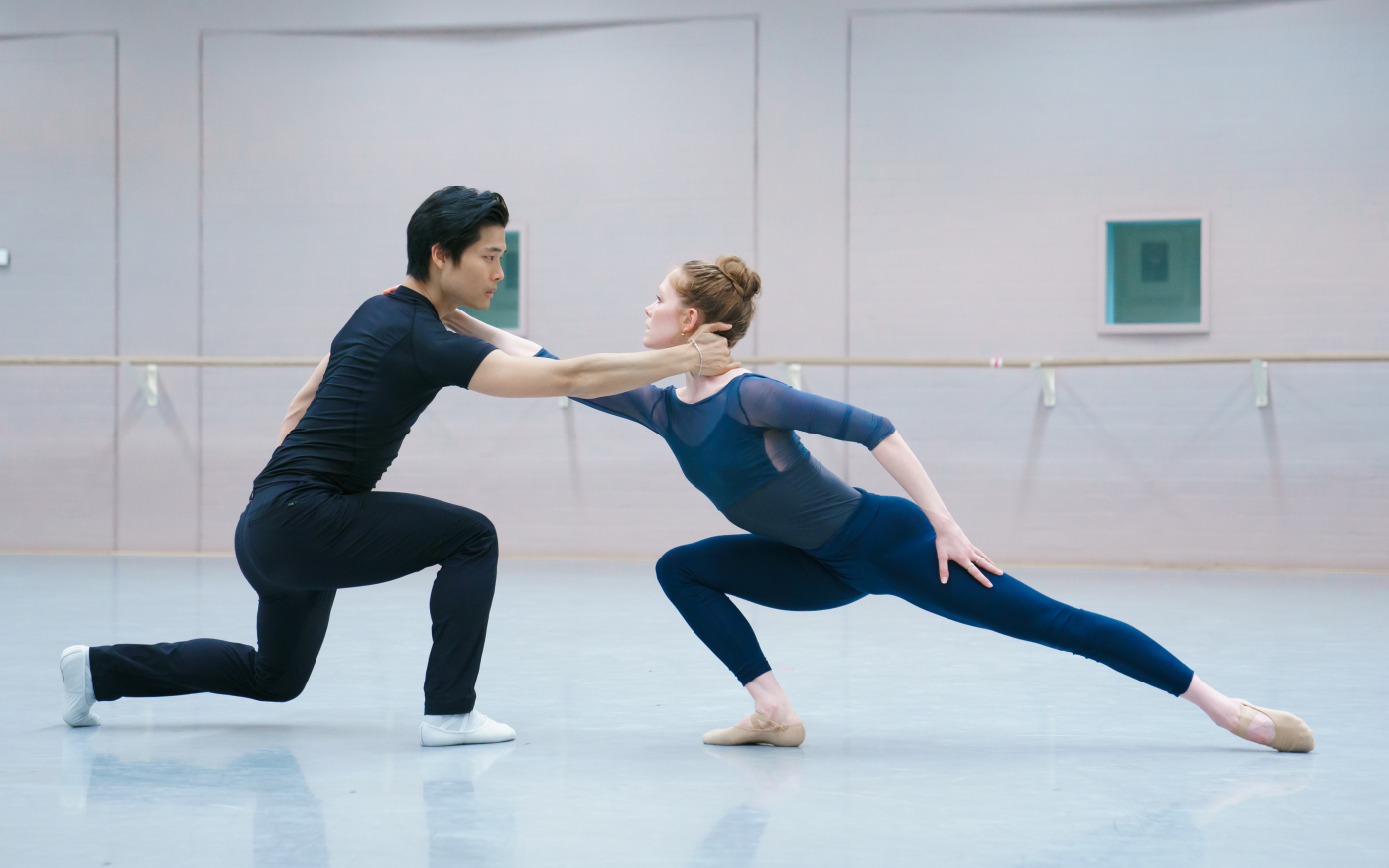Adagio Hammerklavier
Inspired by an extremely slow performance of Beethoven's Pianosonate nr. 29, the master choreographer explored in his Adagio Hammerklavier just how slow a movement can be. Van Manen himself called the ballet for three couples an 'ode to deceleration’, comparing the result with 'a hoop that, after a push, barely runs, and just manages not to fall over’. The choreography excels in its classical allure and is moving because of the beauty of the pure movement construction, without embroidery or frills.
Sarcasmen
Another undisputed highlight of Van Manen's career is Sarcasmen. It was made in 1981 for Rachel Beaujean and Clint Farha. As always with Van Manen, human relationships are central in this ballet for two and a pianist. Sarcasmen is about provocation, challenging each other, even tormenting each other, but never 'over the top' - that would detract from the refined chic and eroticism of the choreography. The duet, which received worldwide praise, marked Beaujean’s breakthrough, who was promoted to second soloist after the premiere.
Trois gnossiennes
Trois gnossiennes, set to eponymous music by Erik Satie, was originally the last part of Hans van Manen's Five Short Stories (1982). Later, the choreography - together with Sarcasmen - was part of the programme Pianovariaties, dealing with the (often conflict-ridden) relationship between men and women. After the vile mockery of Sarcasmen (Piano Variations II), Trois gnossiennes (Piano Variations III) seems to be a temporary truce between the sexes. While there is still some subcutaneous tension in the beginning, the atmosphere gradually changes to one of surrender and harmony: the partners have a natural trust in each other and complement each other perfectly. Just like in Sarcasmen, the pianist is an essential part of the choreography.
Déjà vu
Déjà vu'. These words appeared in the early 1990s in a number of reviews of Hans van Manen's ballets. No matter how much praise there was for the master choreographer's work, some critics said he repeated himself too much. This critical note did not fall on deaf ears: Van Manen struck back mercilessly with a sublime and virtuoso duet in which he managed to capture the essence of human relationships in dance with razor-sharp precision and like no other. In just twelve minutes, he sketches a breath-taking field of tension between power struggles and close solidarity.
Two Pieces for HET (dedicated to Rachel Beaujean)
Two Pieces for HET was originally part of Three Pieces for HET, with which Van Manen, after ten years, made a successful comeback at Dutch National Ballet in 1997. Since then, the last two parts of the choreography have stood on their own and together they form one of the masterpieces of Van Manen's highly acclaimed series of ballets for two. The first, dazzling part is performed at a breakneck speed. The second is a tranquil adagio which movement density gradually decreases. "I have pulled out a piece of knitting instead of knitting it", Van Manen himself said about this work.
Variations for two couples
After Van Manen had previously received a Benois de la Danse Lifetime Achievement Award, he received the 'Benois' for best choreography, also regarded as the 'Oscar of dance', for his Variations for two couples, which he created in 2013. During the creation process of this work, Van Manen was inspired by two dance couples, each with a very different speciality: the first lyrical and subdued, the second flamingly virtuoso. "But it is definitely not a competition", emphasised the choreographer on the eve of the premiere. "It's about the personalities of the dancers, which I want to highlight.”









